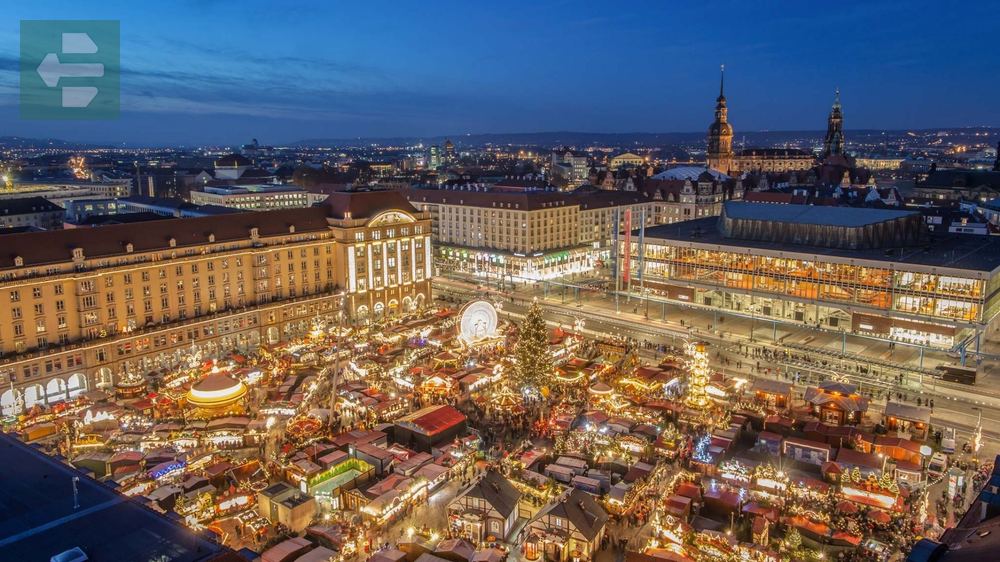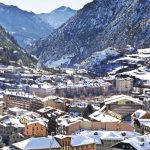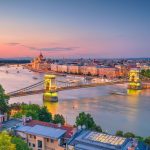Europe transforms into a winter wonderland each December, offering some of the world's most magical Christmas experiences. From Vienna's imperial Christmas markets to Prague's snow-dusted medieval squares, cities like Cologne, Budapest, and Strasbourg create memories that last lifetimes.
Keep reading as we uncover the best places in Europe for Christmas that will fill your holiday season with wonder, warmth, and unforgettable moments.
List of Contents
- 1. Vienna: Imperial Christmas Elegance
- 2. Prague: Medieval Christmas Magic
- 3. Cologne: Cathedral Christmas Splendor
- 4. Budapest: Thermal Christmas Comfort
- 5. Strasbourg: Capital of Christmas
- 6. Colmar: Fairy Tale Christmas Village
- 7. Bruges: Medieval Christmas Wonderland
- 8. Lapland: Arctic Christmas Adventure
- 9. Zurich: Swiss Christmas Precision
- 10. Edinburgh: Highland Christmas Spirit
- 11. Tallinn: Medieval Baltic Christmas
- Create Your Perfect European Christmas
1. Vienna: Imperial Christmas Elegance
Vienna's Christmas markets bloom across the city like golden flowers in winter darkness. The Schönbrunn Palace market glows against baroque architecture, while vendors sell handcrafted ornaments and roasted chestnuts that warm your hands on cold December evenings.

I still remember standing in Rathausplatz at 5 PM, watching children ice-skate while classical music drifted from the nearby concert halls. The smell of Glühwein mixed with cinnamon pastries created a sensory map I follow every winter.
The city's coffeehouse culture continues through December. Duck into a traditional café when your feet grow cold from cobblestone wandering.
Quick Facts:
- Peak Season: December 1-24
- Getting There: Vienna International Airport, direct trains from major European cities
- Entry Fee: Markets free, concerts from €20
- Suggested Stay: 3-4 days
- Must-Visit: Schönbrunn Palace Market, Rathausplatz, Spittelberg Market
2. Prague: Medieval Christmas Magic
Prague's Christmas markets nestle between Gothic spires and medieval towers. Old Town Square becomes a fairy tale setting where church bells ring across snow-covered rooftops and wooden stalls sell traditional Czech handicrafts.
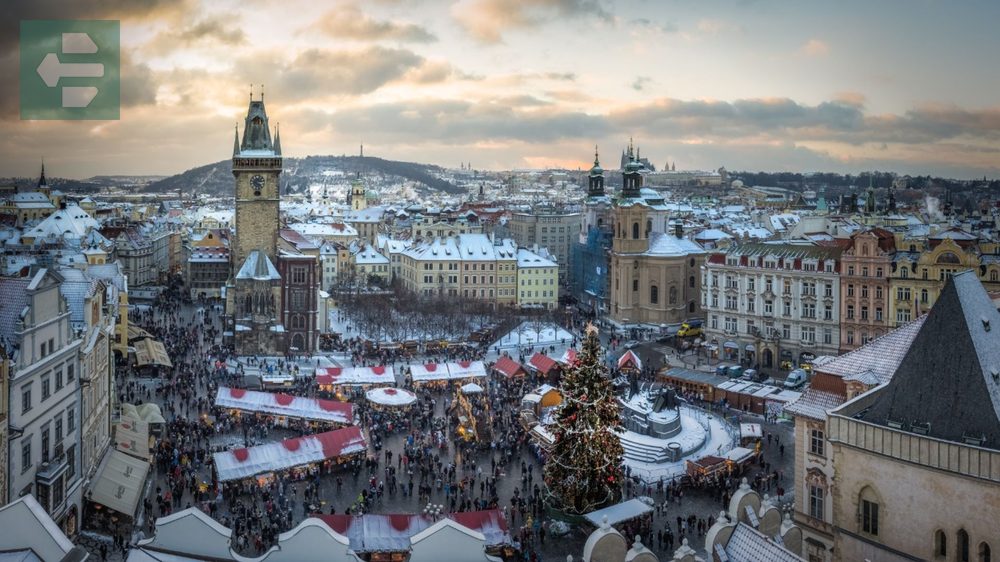
The astronomical clock strikes every hour while market visitors gather below, breath visible in cold air. Trdelník pastries spiral on wooden sticks, their sweet smoke mixing with pine-scented Christmas trees.
Climb Petřin Hill before sunset. The entire city spreads below like a Christmas card painted in gold and red.
Quick Facts:
- Peak Season: November 26 – January 6
- Getting There: Václav Havel Airport, central train station connections
- Entry Fee: Markets free, castle tours from €10
- Suggested Stay: 3-4 days
- Must-Visit: Old Town Square, Wenceslas Square, Prague Castle, Petřin Hill
3. Cologne: Cathedral Christmas Splendor
Seven Christmas markets spread across Cologne, each with distinct character. The cathedral market sits in the shadow of Gothic towers that took 600 years to complete, while wooden stalls sell everything from handwoven scarves to carved nativity scenes.

The Heinzels Winter Market celebrates local folklore with whimsical decorations. Kölsch beer flows warm and golden, different from the cold version served in summer months.
Walk the Rhine promenade after dark. Christmas lights reflect on dark water like scattered stars.
Quick Facts:
- Peak Season: November 23 – December 23
- Getting There: Cologne Bonn Airport, central train hub
- Entry Fee: Markets free, cathedral tower €6
- Suggested Stay: 2-3 days
- Must-Visit: Cathedral Market, Heinzels Winter Market, Rhine Promenade
4. Budapest: Thermal Christmas Comfort
Budapest's Christmas Fair fills Vörösmarty Square with Hungarian folk art and chimney cake that spirals warm and sweet. The thermal baths stay open through winter, creating an unusual Christmas tradition of soaking in hot springs under December stars.

At Széchenyi Baths, locals play chess in steaming pools while snow falls on their shoulders. The contrast between hot mineral water and cold air creates a sensation found nowhere else in Europe.
Cross the Chain Bridge at sunset. Buda Castle glows gold against purple winter sky.
Quick Facts:
- Peak Season: November 18 – January 1
- Getting There: Budapest Ferenc Liszt International Airport
- Entry Fee: Markets free, thermal baths from €20
- Suggested Stay: 3-4 days
- Must-Visit: Vörösmarty Square, Széchenyi Baths, Chain Bridge, Buda Castle
5. Strasbourg: Capital of Christmas
Strasbourg calls itself the “Capital of Christmas” and proves the title each December. The Christkindelsmärik dates to 1570, making it one of Europe's oldest Christmas markets. Half-timbered houses frame wooden stalls selling Alsatian specialties and handcrafted ornaments.
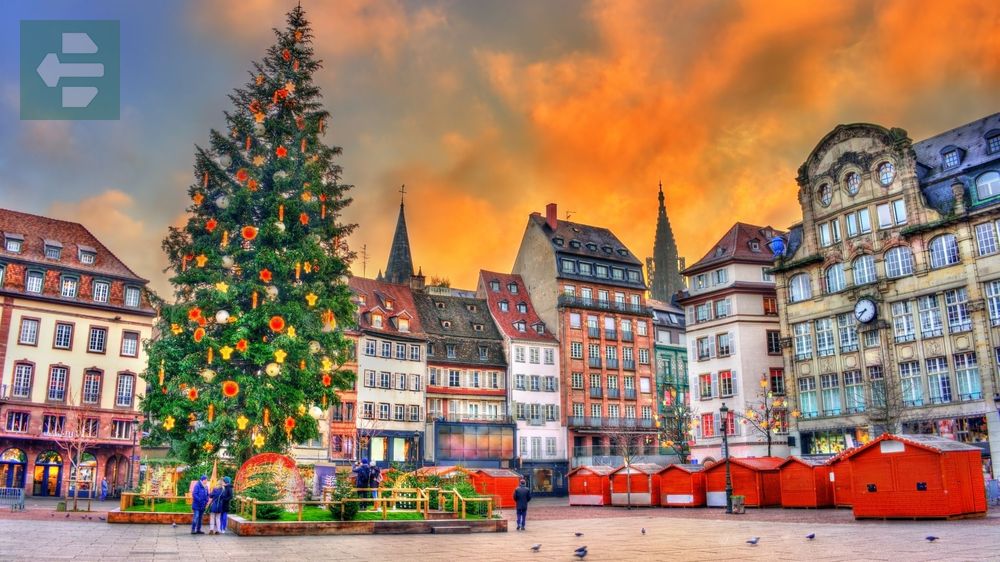
The cathedral's astronomical clock draws crowds at 12:30 PM when mechanical figures perform their daily dance. Gothic spires pierce winter sky while market smells of spiced wine and fresh-baked pretzels drift through narrow streets.
Take a boat tour through Petite France district. Medieval buildings reflect in still canals like mirror images.
Quick Facts:
- Peak Season: November 24 – December 24
- Getting There: Strasbourg Airport, TGV high-speed rail
- Entry Fee: Markets free, cathedral tower €8
- Suggested Stay: 2-3 days
- Must-Visit: Christkindelsmärik, Notre-Dame Cathedral, Petite France, Place Kléber
6. Colmar: Fairy Tale Christmas Village
Colmar's Christmas markets occupy five locations throughout the old town, each more charming than the last. Half-timbered houses painted in pastel colors line cobblestone streets where snow settles like powdered sugar on medieval rooftops.

Little Venice district becomes especially magical during Christmas season. Canal reflections double the fairy lights while wooden bridges frame perfect photographs that capture Alsatian Christmas spirit.
The covered market sells local wines and regional delicacies. Sample Gewürztraminer while watching snow fall on ancient timber beams.
Quick Facts:
- Peak Season: November 23 – December 29
- Getting There: Nearest airports Basel-Mulhouse or Strasbourg, train connections
- Entry Fee: Markets free, Unterlinden Museum €13
- Suggested Stay: 2 days
- Must-Visit: Little Venice, Covered Market, Old Town squares, Unterlinden Museum
7. Bruges: Medieval Christmas Wonderland
Bruges wraps itself in Christmas magic like a medieval tapestry. The main market square transforms into a winter wonderland where horse-drawn carriages clip-clop over cobblestones between Gothic buildings that seem untouched by time.

Canal tours continue through winter, offering unique perspectives of Christmas-decorated bridges and medieval architecture. The belfry tower rings Christmas carols across the old town while chocolate shops display holiday confections in frost-covered windows.
Try the local Christmas beer at De Garre, a hidden pub reached through an alley barely wide enough for two people.
Quick Facts:
- Peak Season: November 24 – January 7
- Getting There: Brussels Airport then train, or Bruges train station
- Entry Fee: Markets free, belfry tower €12
- Suggested Stay: 2-3 days
- Must-Visit: Markt Square, Canal tours, Belfry Tower, Chocolate shops
8. Lapland: Arctic Christmas Adventure
Lapland offers authentic Arctic Christmas experiences where reindeer actually roam through snow-covered forests and the Northern Lights paint December nights in green and purple ribbons. Rovaniemi, the official hometown of Santa Claus, becomes a pilgrimage site for Christmas believers.
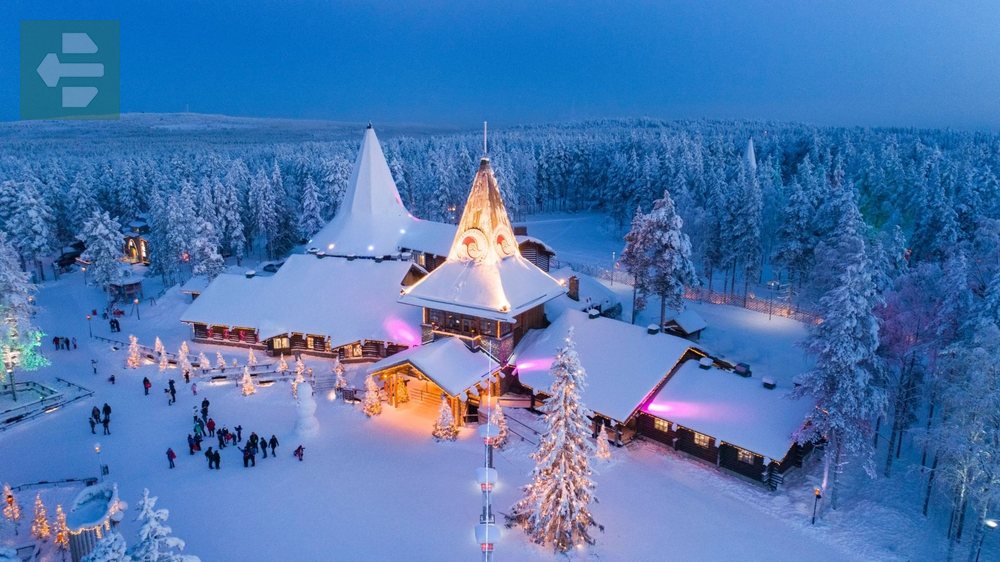
The polar night begins in December, creating a blue twilight that lasts all day. Husky sledding and reindeer farms provide authentic Arctic adventures while traditional Sami culture adds depth to the Christmas experience.
Sleep in a glass igloo at Kakslauttanen. Nothing prepares you for watching aurora borealis from bed while snow falls silently outside.
Quick Facts:
- Peak Season: December – February
- Getting There: Rovaniemi Airport, overnight trains from Helsinki
- Entry Fee: Santa Village free, activities from €50
- Suggested Stay: 4-5 days
- Must-Visit: Santa Claus Village, Arctic Circle, Ranua Wildlife Park, Aurora watching
9. Zurich: Swiss Christmas Precision
Zurich's Christmas markets reflect Swiss precision and quality. Bahnhofstrasse transforms into Europe's most expensive Christmas shopping street while traditional markets sell handcrafted Swiss goods and mulled wine served in ceramic cups you can keep as souvenirs.

The lake remains unfrozen through December, reflecting Christmas lights from surrounding hills. Take the funicular up Uetliberg mountain for panoramic views of the city lights spread below like scattered diamonds.
Visit Sprüngli chocolate shop on Paradeplatz. Their hot chocolate recipe hasn't changed since 1845 and tastes like liquid Christmas.
Quick Facts:
- Peak Season: November 24 – December 24
- Getting There: Zurich Airport, central train connections across Europe
- Entry Fee: Markets free, mountain railways from CHF 12
- Suggested Stay: 2-3 days
- Must-Visit: Bahnhofstrasse, Lake Zurich, Uetliberg, Old Town markets
10. Edinburgh: Highland Christmas Spirit
Edinburgh's Christmas celebrations stretch from November through early January, transforming the medieval old town into a Scottish winter wonderland. The castle provides a dramatic backdrop for Christmas markets while Prince's Street Gardens fills with fairground rides and traditional Scottish crafts.
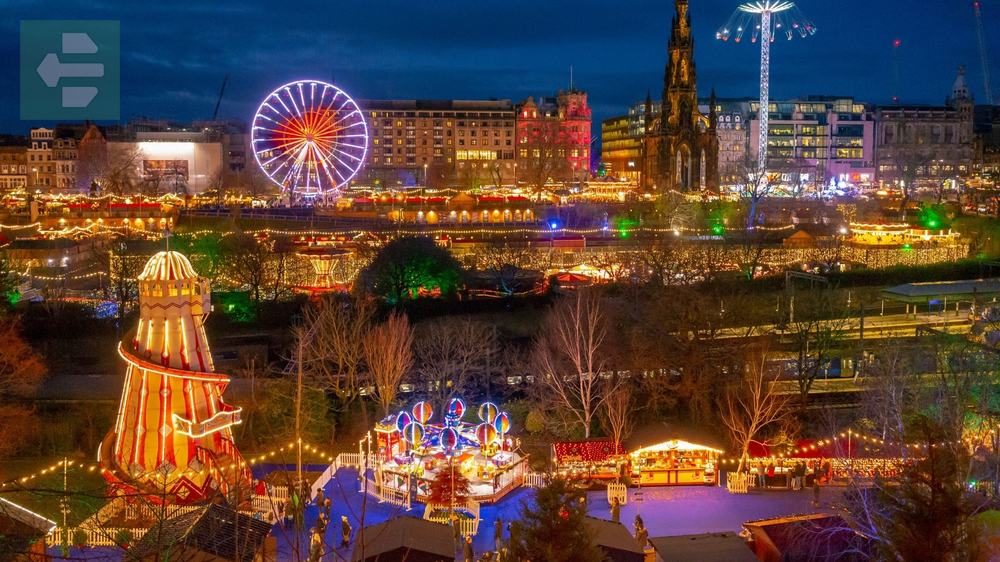
The Hogmanay New Year celebration extends the Christmas season into a weeks-long festival. Highland games demonstrations and traditional Scottish music add cultural depth to typical Christmas market offerings.
Climb Arthur's Seat on clear December days. The entire city spreads below while the North Sea stretches to the horizon like pewter.
Quick Facts:
- Peak Season: November 18 – January 4
- Getting There: Edinburgh Airport, Waverley train station
- Entry Fee: Markets free, castle entry £19.50
- Suggested Stay: 3-4 days
- Must-Visit: Edinburgh Castle, Prince's Street Gardens, Royal Mile, Arthur's Seat
11. Tallinn: Medieval Baltic Christmas
Tallinn's Christmas market sits in medieval Town Hall Square, where Gothic spires rise above wooden stalls selling Estonian handicrafts and traditional Baltic foods. The UNESCO World Heritage old town creates an authentic medieval atmosphere enhanced by snow-covered cobblestones.

Estonia's first Christmas tree was erected in Tallinn's main square in 1441, making it one of Europe's oldest Christmas tree traditions. The tradition continues today with a magnificent tree that dominates the market square.
Walk the medieval city walls at sunset. The Baltic Sea glimmers silver beyond red-tiled rooftops while church bells ring across the ancient town.
Quick Facts:
- Peak Season: November 25 – January 7
- Getting There: Tallinn Airport, ferry connections from Helsinki
- Entry Fee: Markets free, medieval towers €4
- Suggested Stay: 2-3 days
- Must-Visit: Town Hall Square, Medieval Old Town, City Walls, Alexander Nevsky Cathedral
Create Your Perfect European Christmas
These eleven destinations offer different flavors of European Christmas magic, from imperial Vienna's elegant markets to Lapland's authentic Arctic adventures. Each city brings unique traditions, flavors, and memories that transform ordinary December days into extraordinary holiday experiences.
Start planning now. December flights book quickly, and the best Christmas accommodations disappear faster than snow in spring sunshine.
Your perfect European Christmas awaits. Choose your destination, pack warm clothes, and prepare for holiday memories that will warm every winter that follows.
